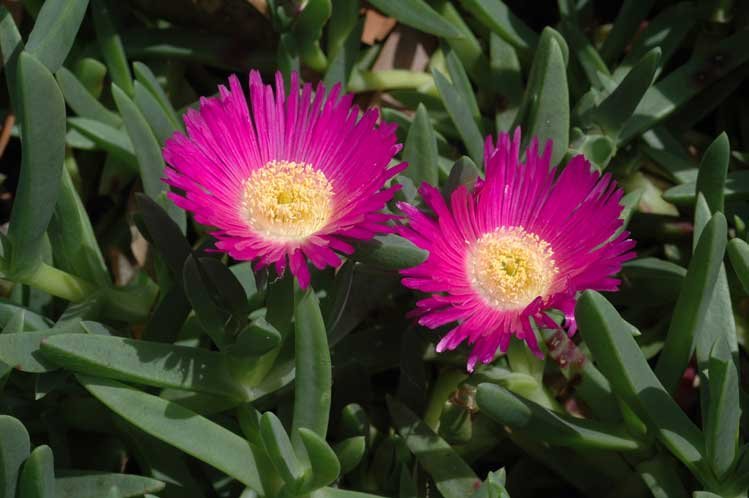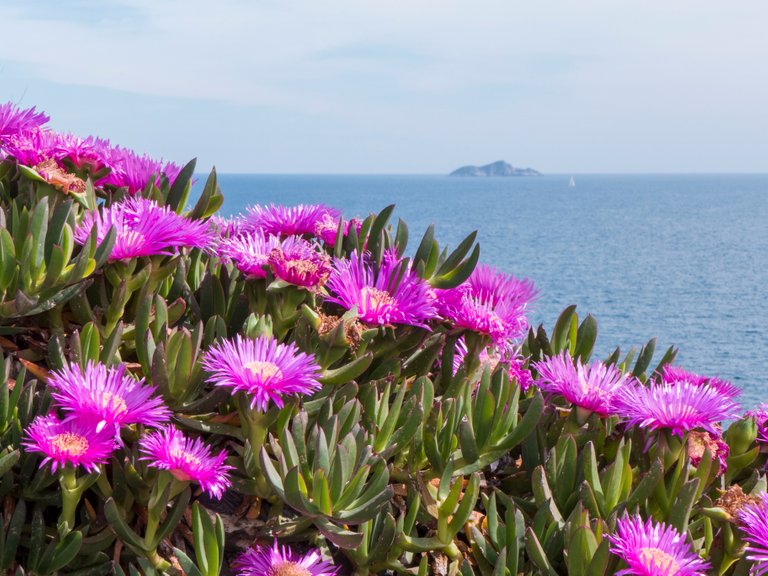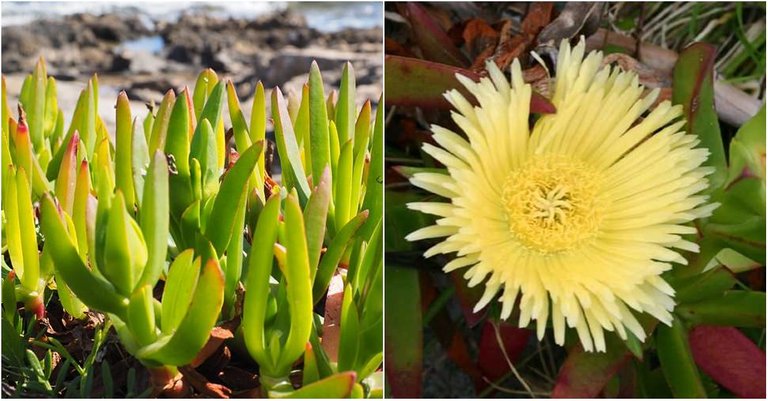Beautiful plant, my friend and Carpobrotus glaucescens is a prostrate, creeping succulent that has long trailing stems to 2 m long, which root at nodes along the stems. From these nodes the plant produces upright leafy branches. It has thick, fleshy, smooth leaves 3.5-10 cm x 1-1.5 cm, which are triangular in cross section. The plant grows to form a groundcover that can cover a large area.
The plant produces large, striking, deep pink-purple daisy-like flowers from October to January, but also can flower sporadically throughout the year. The plant produces a red-purple berry fruit, which was used by the native aborigines as a food source. The flesh of the fruit is said to have a taste similar to salty apples. The roasted leaves have been used as a salt substitute. Early European explorers used the plant as an anti-scurvy treatment. The juice of the leaves can also be used to relieve pain from insect bites.


Carpobrotus glaucescens is found growing naturally in coastal areas on sand dunes along the NSW and Queensland coast, north to Rockhampton. It also grows down into the east coast areas of Victoria. Pigface grows on the front of sand dunes and acts as a stabilizer where it helps to bind the sand, this allows more effective sand stabilizers such as spinifex grass to take a hold. Being a pioneer species it is important in paving the way for more complex communities.
As would be expected C. glaucescens is very salt tolerant and is able to withstand salt spray, strong winds and sand blast. If covered with sand the plant can survive, grow upwards and produce a new plant mat over the old one.
Pigface is generally a summer-spring growing plant. It can be grown either from seed or cuttings. Propagation is easiest by layering (rooting horizontal stem cuttings), as this is how the plant grows naturally. These layers should be around 30 cm in length and planted leaving at least 5 cm of the plant above the sand or soil. The plant can also be grown from cut pieces or division of large plants.


C. glaucescens will grow in most relatively well-drained positions in either full sun or partial shade; though an open sunny position is best. Pigface can also tolerate extended dry periods. Pigface is relatively pest free but may be attacked by scale insects in summer.
Carpobrotus glaucescens makes a colourful hardy and attractive groundcover suitable for the garden and is very useful for wind erosion control and for binding loose sandy soils. Over very large areas of sand dunes it is best planted in combination with Spinifex (Spinifex sericeus ) and Goats-foot (Ipomoea pes-caprae) as it seldom provides complete cover. Pigrace is definitely an attractive plant suitable for rockeries, low maintenance gardens or gardens with a sea side frontage.
Thank you @ctrl-alt-nwo
A source of information: https://www.anbg.gov.au/gnp/interns-2005/carpobrotus-glaucescens.html